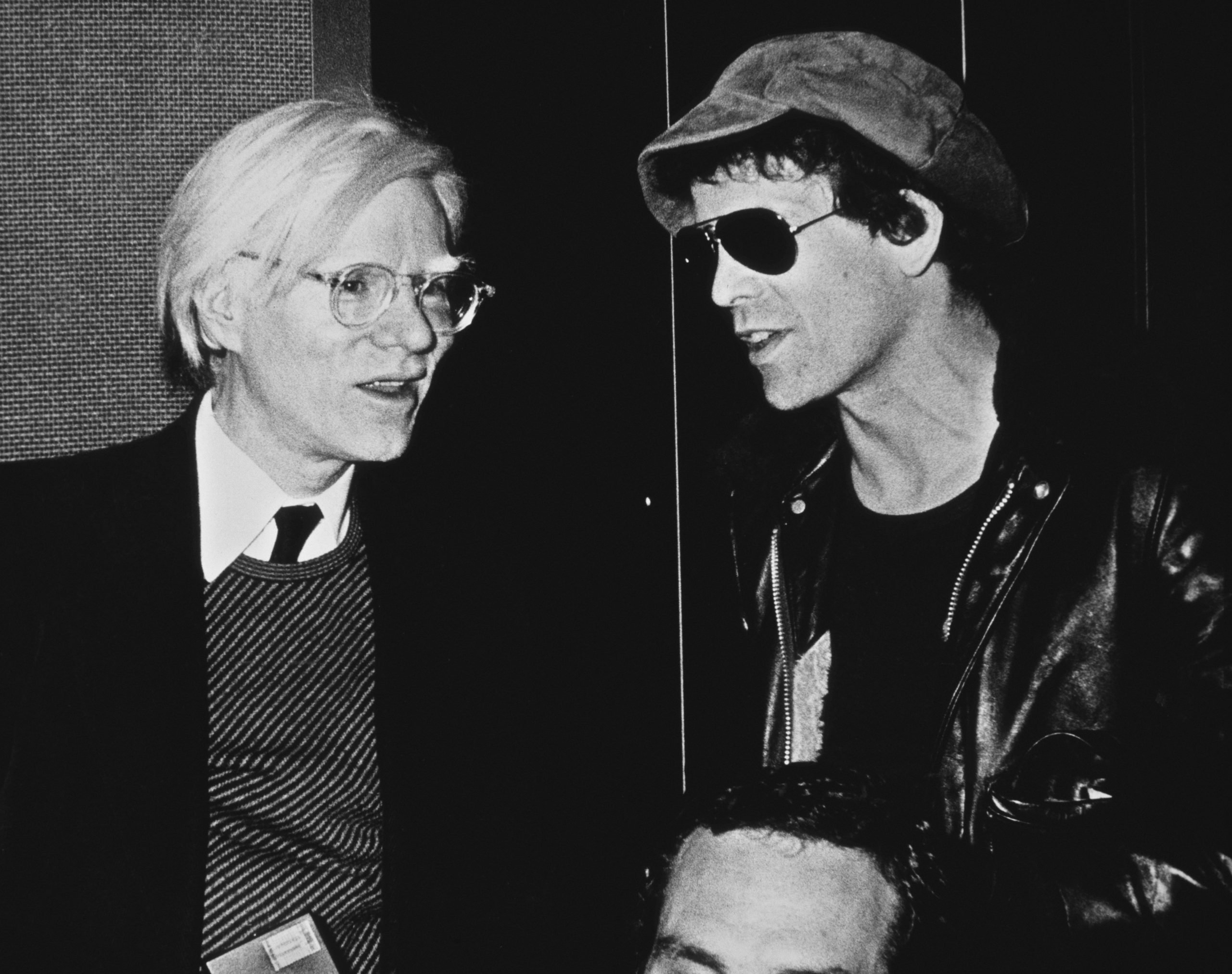After Andy Warhol’s death in 1987, Velvet Underground founders Lou Reed and John Cale came together to Songs for Drella, a cycle of songs about their former benefactor. Performed at the Brooklyn Academy of Music, an album followed in 1990, an exemplary dedication.
Turns out, this wasn’t Reed’s first batch of songs about his mentor. Reed (d. 2013) recorded an unreleased cassette circa 1975 based on the artist’s book Andy Warhol’s philosophy: from A to B and back again. In a playful number that sounds like a children’s song, Reed sings:
Business is art
Business is art
Machines make the best art I see
Another song ironically develops “So what?” by Warhol. outlook on life. Discovered in 2019, these unreleased tracks can finally be heard – at least through headphones – in a recently opened exhibition at the New York Public Library for the Performing Arts, “Lou Reed: Caught Between the Twisted Stars”. Although these are demos, as Reed said in 1973, “My shit is better than most people’s diamonds.”
It’s hard to impress a hardcore follower, but mission accomplished with this show. ‘Caught Between the Twisted Stars’ doesn’t rival (nor try) the mammoth ‘The Velvet Underground Experience,’ which debuted at the Philharmonie de Paris in 2016, followed by a three-month stint. in the East Village in 2019. And is there much more to say about the band after last year’s superb Todd Haynes documentary? Rather, the exhibit (which opened June 9) fleshes out Reed’s prolific but often overshadowed solo career. It’s an intimate insight, not a complete view.
John Cale and Lou Reed of the Velvet Underground perform onstage at Cafe Bizarre, New York, December 1965. Photo: Adam Ritchie/Redferns.
Don Fleming and Jason Stern, who managed the Reed Archive until the cache was acquired by the New York Public Library in 2017, curated the exhibit, which draws on those holdings, as well as the archives of Jim Carroll and Sal Mercuri Velvet Und.Underground collection. The mighty treasure includes tour posters, studio notes and assorted memorabilia. There is some of Reed’s personal correspondence, including birthday cards from VU drummer Maureen Tucker and a letter from another writer who, like Reed, specialized in stories of people deprived of their rights and addicts, Hubert Selby, Jr. (he signed with his nickname, “Cubby.”) Over the years in the photos, Reed transforms from a football-shirt-wearing jock to an androgynous glam-rock goblin and vice versa.
Photographer Mick Rock documented Reed in some of his most iconic images, such as the cover of his 1972 solo, Transformer (this and the next, the devastating 1973 concept album, Berlin, could have been better represented, but the archives were probably not full of material from this period). Many lesser-known portraits of the rock musician appear here instead – excerpts from the Coney Island Baby cover session, Reed sitting in his apartment, flanked by his pet dachshund – and are more moving than the images we’ve seen endlessly.
A mandatory detour into Reed’s mule and scooter era of the early 1980s is represented by objects like the motorcycle helmet that adorns Legendary Hearts. A Betamax recording shows him energetically performing “Street Hassle” in 1978 wearing a baby t-shirt exposing his belly. The show excels at evoking the magic of musical creation through objects and artifacts.

Reed’s “Legendary Hearts” helmet and other memorabilia are on display. Photo: Max Touhey, courtesy of the New York Public Library.
The real pleasures, however, are the aural gems, of which the Warhol-inspired soundtrack is just one. An acoustic demo tape from 1965 documents previously unheard forays into and gestation of the Velvets’ seminal tracks – just a few years before their release. They include a country version of “Pale Blue Eyes” with backing and vocals by Cale and a version of “Men of Good Fortune” that shares only one title with the eventual 1973 track Light in the Attic, a brand specializing in reissues, will release the 1965 tape in August as lyrics and music, but a host of previously unreleased songs from the series are stuck in copyright limbo, such as the attempted piano ballad “Ondine,” by Reed, Cale and Nico, from 1966. The tunes are worth the wait. headphone stations and can inspire multiple visits – too bad you can’t skip to play what you want and have to listen to the end.

He got it: Lou Reed poses for an RCA publicity photo circa 1973 in New York City. Photo: Michael Ochs Archive/Getty Images.
Reed’s wife, artist Laurie Anderson, provided items such as guitars, tai chi weapons and the 1974 handwritten lyrics. Sally can’t dance. The entire album is charted, along with songs that didn’t make the cut, such as the intriguing tracks “Falling in Love 1 (Andy, Nico, John)” and “Falling in Love II (David, Angie, Iggy + Mick).” The pages have been assembled behind a glass wall so that both sides can be seen. This is perhaps the most moving visual component of the show, where the ordinary meets the sublime in sprouting in blue ink from his work.
“Lou Reed: Caught Between the Twisted Stars” is on view through March 4, 2023 at the New York Public Library for the Performing Arts, 40 Lincoln Center Plaza, New York, NY 10023.
Follow Artnet News on Facebook:
Want to stay one step ahead of the art world? Subscribe to our newsletter to receive breaking news, revealing interviews and incisive reviews that move the conversation forward.

